Abstract
The spatially separated forms of ornithine transcarbamoylase (EC 2.1.3.3) of different molecular weights coexist in sugarcane (Saccharum sp.). The smaller form of the enzyme (mol wt 79,000) appears to be cytoplasmic, while a larger form (mol wt 224,000) sedimented with mitochondria. The Km of the cytoplasmic enzyme for ornithine was 3.11 mm, while the enzyme in the mitochondrial fraction had a Km of 0.50 mm for this substrate; both enzymes had similar affinity for carbamoyl phosphate (0.12 mm). Characteristics of the smaller ornithine transcarbamoylase are in keeping with a predominantly catabolic function, those of the enzyme which sediments with mitochondria, with an anabolic function. Only the mitochondrial enzyme was regulated in vivo by exogenous arginine.
Full text
PDF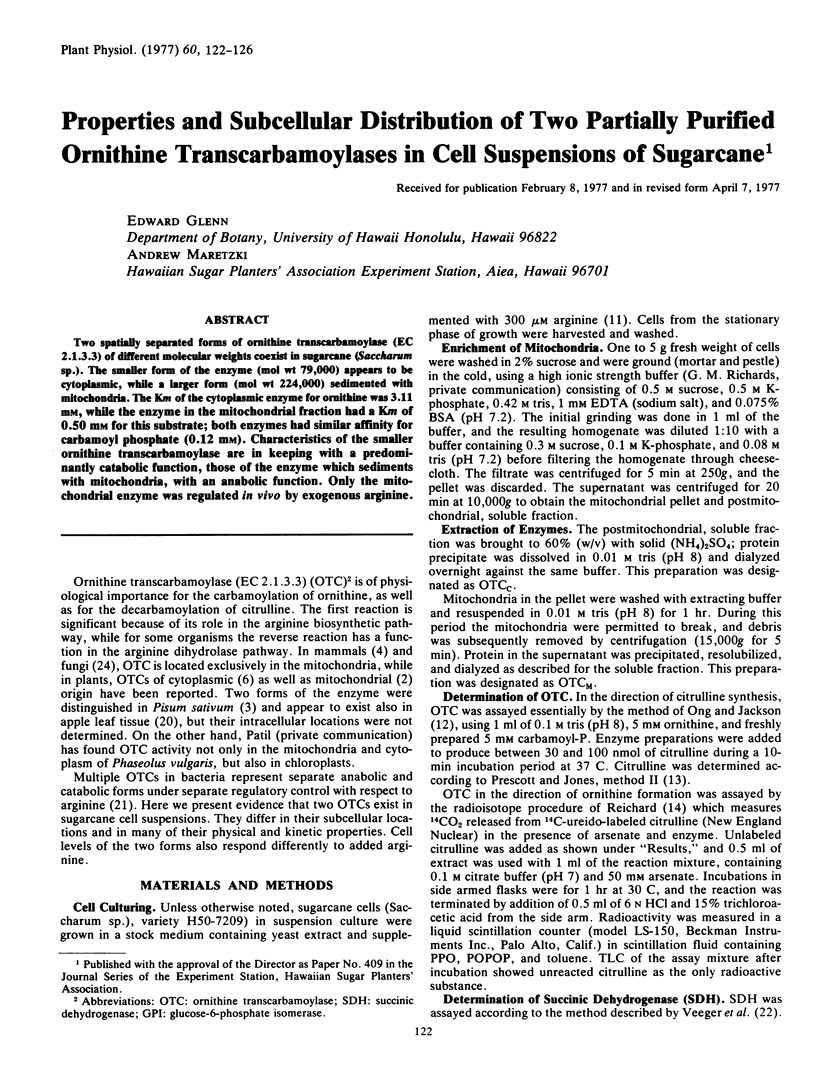
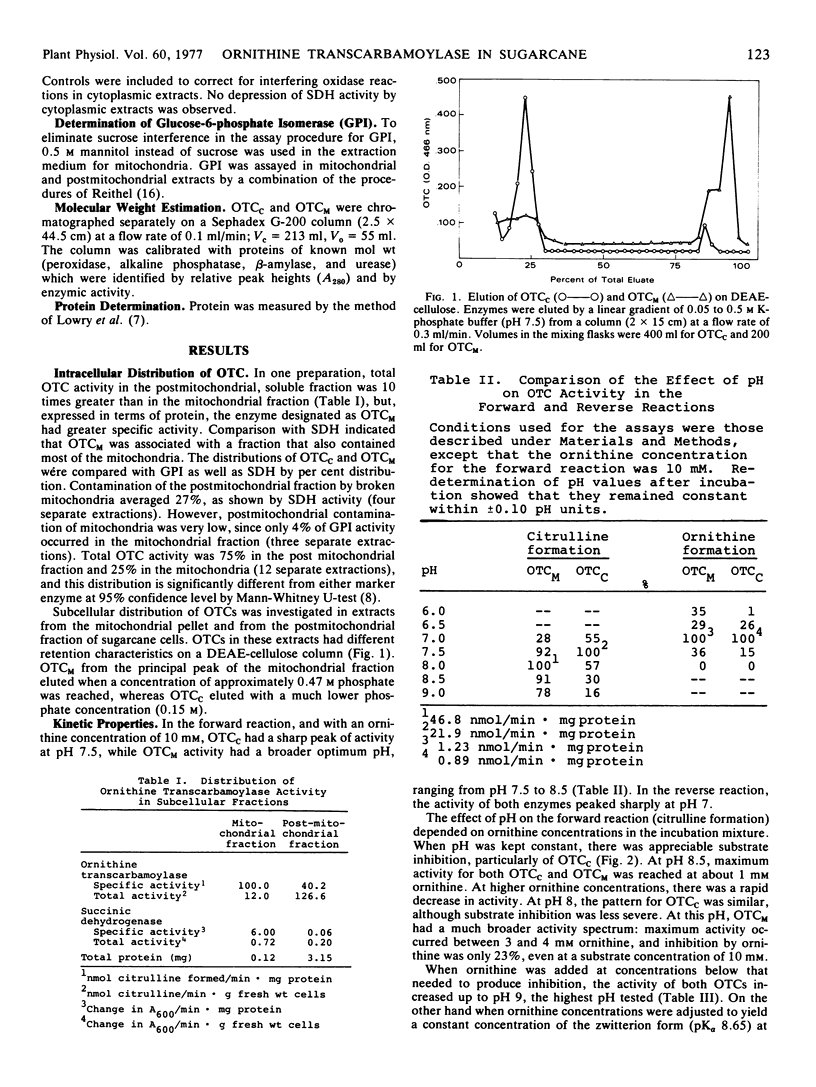
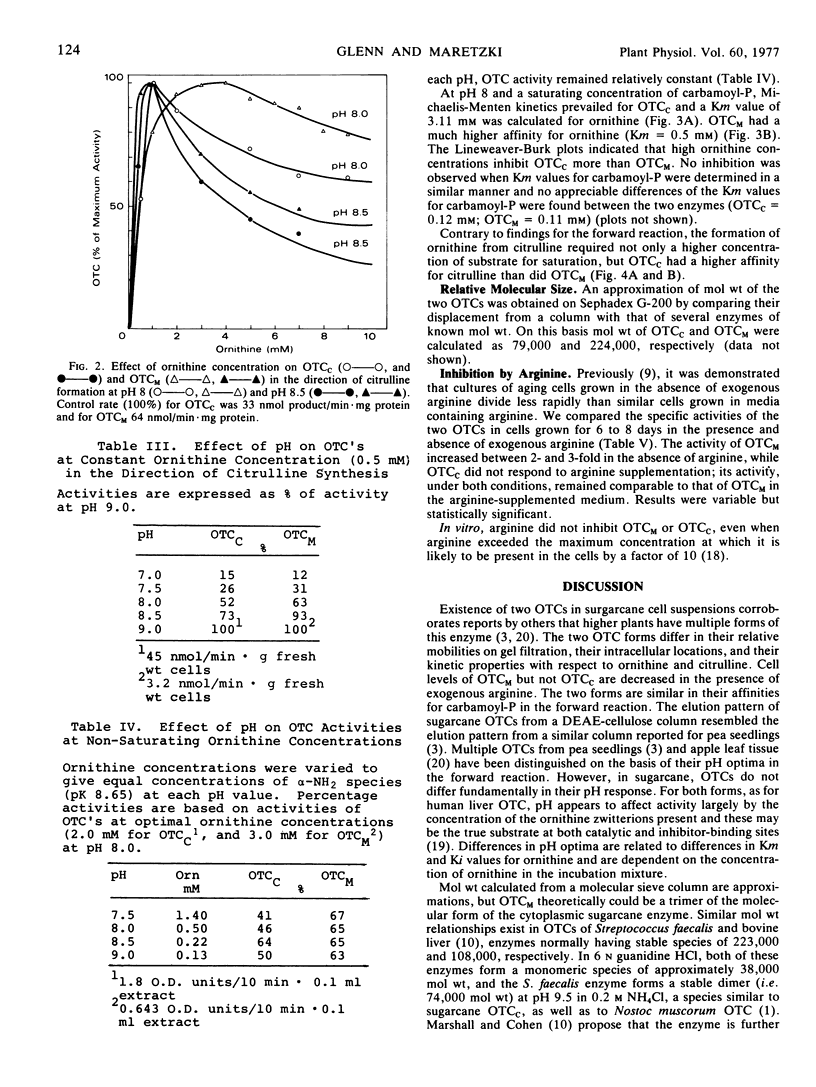
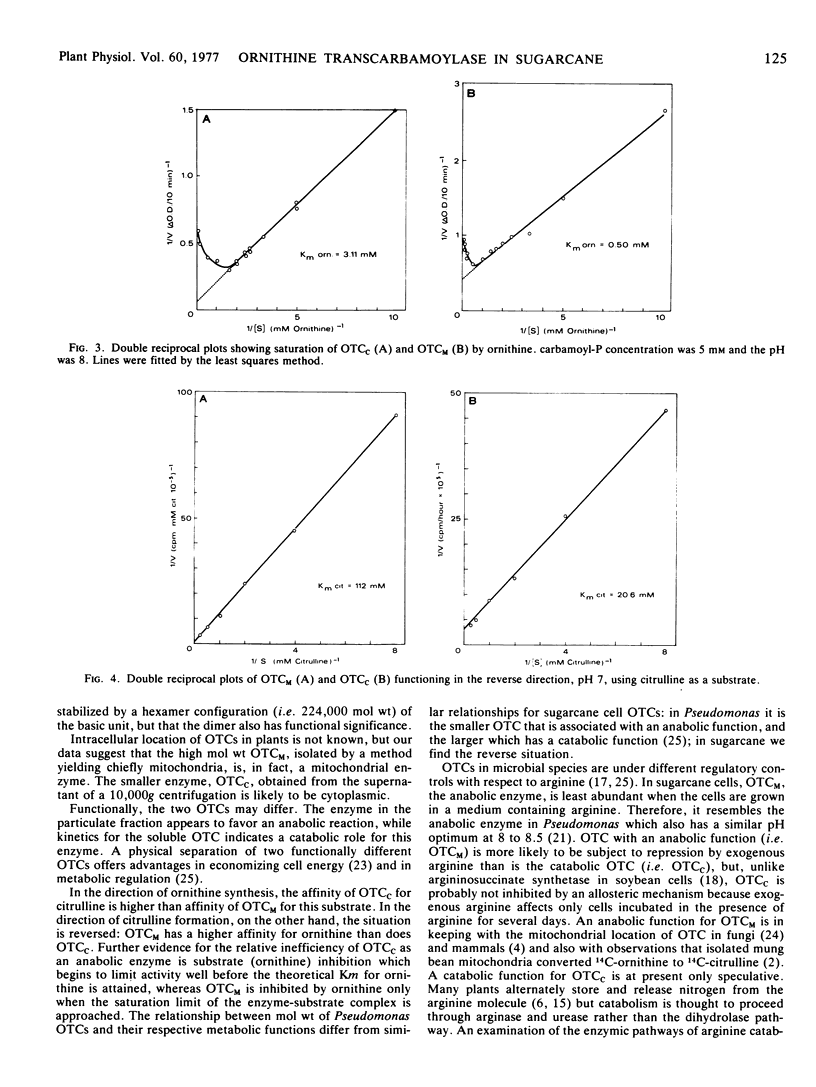
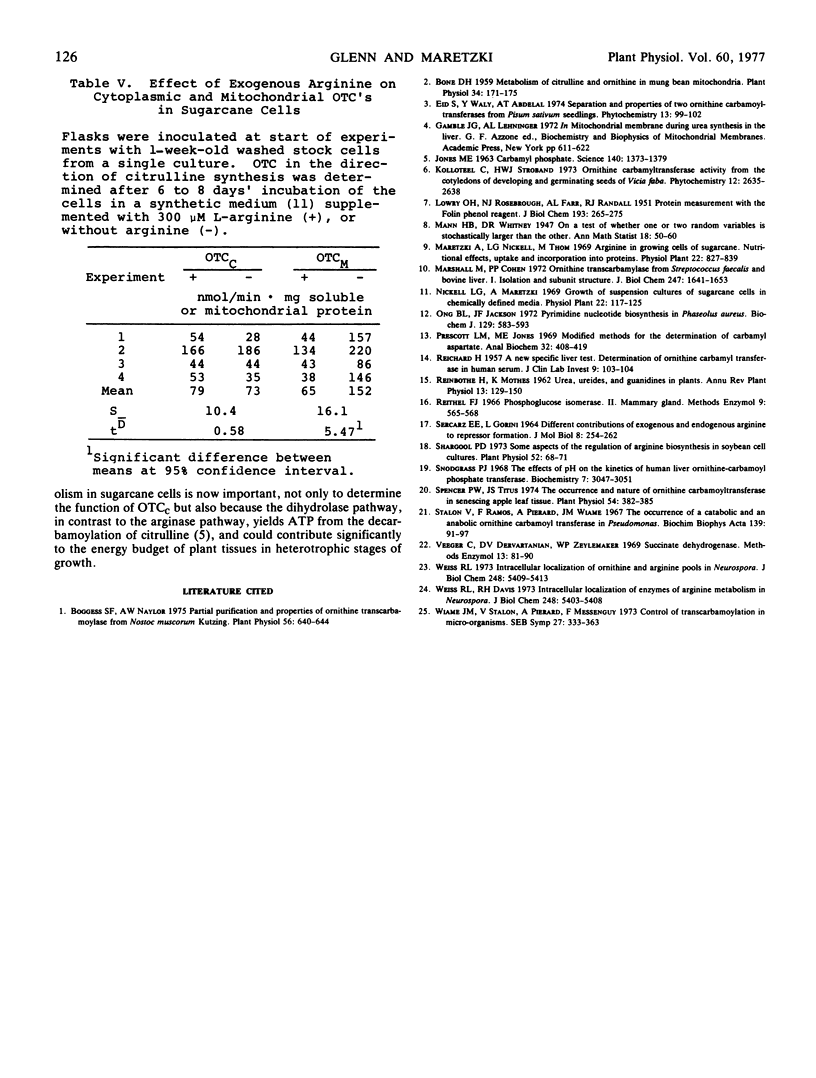
Selected References
These references are in PubMed. This may not be the complete list of references from this article.
- Boggess S. F., Naylor A. W. Partial Purification and Properties of Ornithine Transcarbamoylase from Nostoc muscorum Kützing. Plant Physiol. 1975 Nov;56(5):640–644. doi: 10.1104/pp.56.5.640. [DOI] [PMC free article] [PubMed] [Google Scholar]
- Bone D. H. Metabolism of Citrulline and Ornithine in Mung Bean Mitochondria. Plant Physiol. 1959 Mar;34(2):171–175. doi: 10.1104/pp.34.2.171. [DOI] [PMC free article] [PubMed] [Google Scholar]
- LOWRY O. H., ROSEBROUGH N. J., FARR A. L., RANDALL R. J. Protein measurement with the Folin phenol reagent. J Biol Chem. 1951 Nov;193(1):265–275. [PubMed] [Google Scholar]
- Marshall M., Cohen P. P. Ornithine transcarbamylase from Streptococcus faecalis and bovine liver. I. Isolation and subunit structure. J Biol Chem. 1972 Mar 25;247(6):1641–1653. [PubMed] [Google Scholar]
- Ong B. L., Jackson J. F. Pyrimidine nucleotide biosynthesis in Phaseolus aureus. Enzymic aspects of the control of carbamoyl phosphate synthesis and utilization. Biochem J. 1972 Sep;129(3):583–593. doi: 10.1042/bj1290583. [DOI] [PMC free article] [PubMed] [Google Scholar]
- Prescott L. M., Jones M. E. Modified methods for the determination of carbamyl aspartate. Anal Biochem. 1969 Dec;32(3):408–419. doi: 10.1016/s0003-2697(69)80008-4. [DOI] [PubMed] [Google Scholar]
- SERCARZ E. E., GORINI L. DIFFERENT CONTRIBUTION OF EXOGENOUS AND ENDOGENOUS ARGININE TO REPRESSOR FORMATION. J Mol Biol. 1964 Feb;8:254–262. doi: 10.1016/s0022-2836(64)80135-2. [DOI] [PubMed] [Google Scholar]
- Shargool P. D. Some aspects of the regulation of arginine biosynthesis in soybean cell cultures. Plant Physiol. 1973 Jul;52(1):68–71. doi: 10.1104/pp.52.1.68. [DOI] [PMC free article] [PubMed] [Google Scholar]
- Spencer P. W., Titus J. S. The occurrence and nature of ornithine carbamoyltransferase in senescing apple leaf tissue. Plant Physiol. 1974 Sep;54(3):382–385. doi: 10.1104/pp.54.3.382. [DOI] [PMC free article] [PubMed] [Google Scholar]
- Stalon V., Ramos F., Piérard A., Wiame J. M. The occurrence of a catabolic and an anabolic ornithine carbamoyltransferase in Pseudomonas. Biochim Biophys Acta. 1967 May 16;139(1):91–97. doi: 10.1016/0005-2744(67)90115-5. [DOI] [PubMed] [Google Scholar]
- Weiss R. L., Davis R. H. Intracellular localization of enzymes of arginine metabolism in Neurospora. J Biol Chem. 1973 Aug 10;248(15):5403–5408. [PubMed] [Google Scholar]
- Weiss R. L. Intracellular localization of ornithine and arginine pools in Neurospora. J Biol Chem. 1973 Aug 10;248(15):5409–5413. [PubMed] [Google Scholar]
- Wiame J. M., Stalon V., Piérard A., Messenguy F. Control of transcarbamoylation in micro-organisms. Symp Soc Exp Biol. 1973;27:333–363. [PubMed] [Google Scholar]


